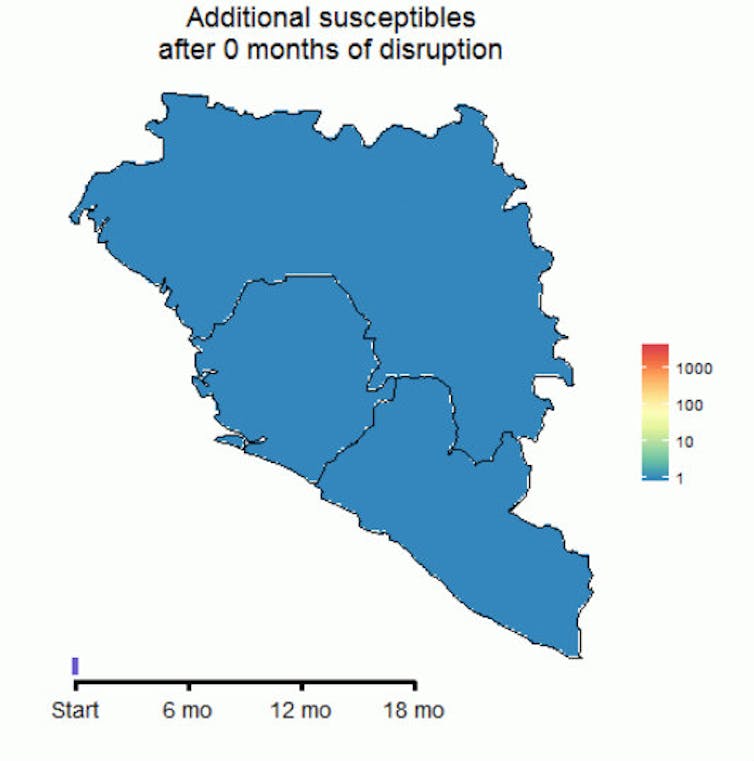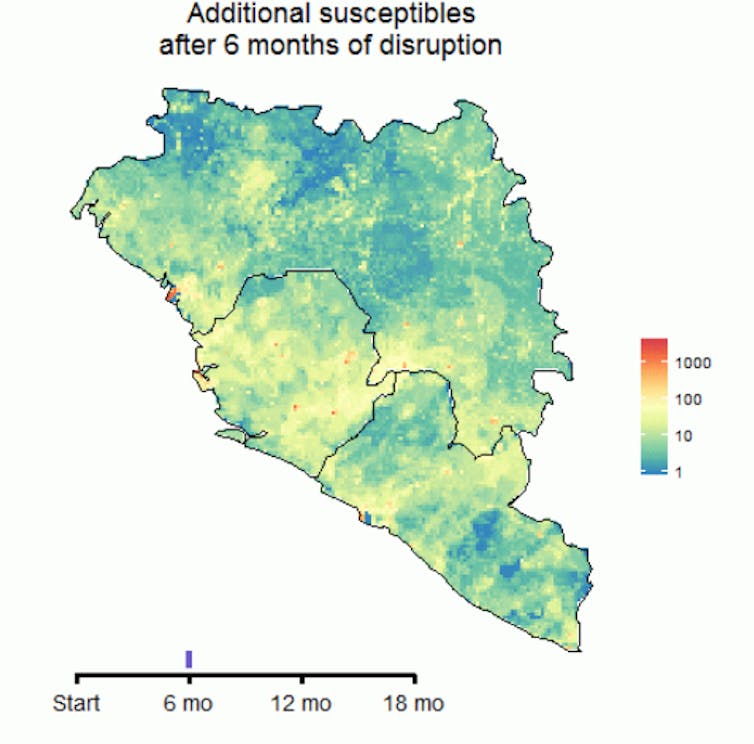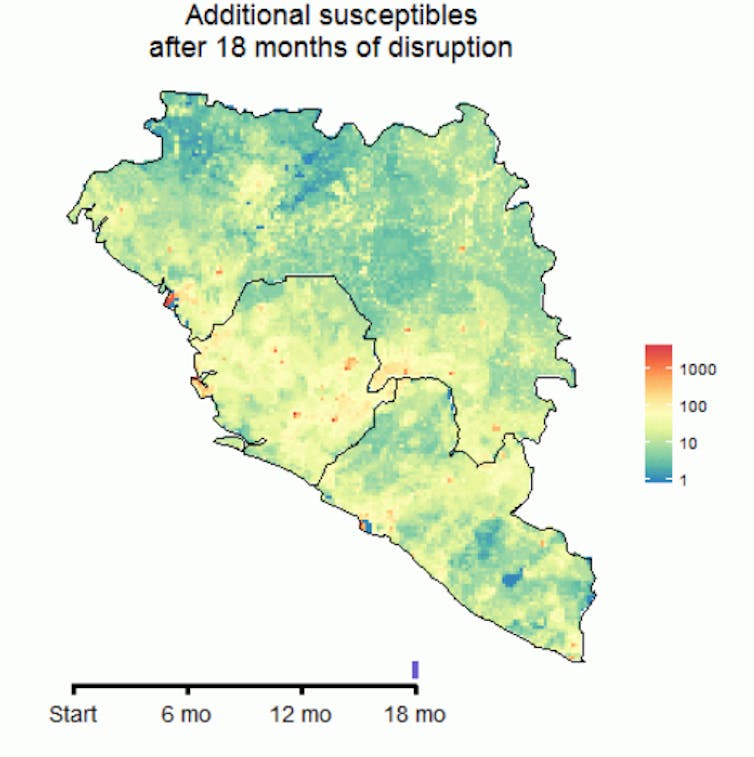The Ebola outbreak in West Africa has been one of the biggest public health disasters of modern times. Not only has it caused the deaths of more than 10,000 people so far but it has also resulted in substantial economic damages to the affected countries.
Thankfully, evidence suggests that case numbers are declining and we may be approaching the end of the epidemic. But the disruption caused to the health systems of Liberia, Guinea and Sierra Leone during the past year raises the prospect that we will soon see the start of new epidemics of childhood infections unless urgent action is taken.
According to mapping carried out with Saki Takahashi at Princeton University and Justin Lessler at Johns Hopkins in the US, we found that after 18 months of Ebola-related disruptions, the number of cases of measles in a potential outbreak could have increased by 100,000 and could cause an additional 5,200 deaths.
Immunisation programmes
Annual childhood deaths from vaccine-preventable diseases have dropped from around 900,000 to 400,000 between 2000 and 2010. For measles, the global estimate of deaths has decreased from 499,000 to 102,000.
Through routine immunisation for childhood infectious diseases such as measles, as well as periodic supplemental large-scale vaccination campaigns, childhood deaths from vaccine-preventable diseases have also dropped significantly over the past decade in West Africa. The three countries affected by Ebola had nearly 93,685 cases of measles in the decade between 1994 and 2003 but only 6,937 between 2004 and 2013.
Nevertheless, coverage rates have not been high enough to prevent the build-up of large numbers of susceptible children over the past years and, prior to the Ebola outbreak, the three main Ebola-affected countries had planned measles vaccination campaigns.
The disruptions caused by Ebola meant these campaigns did not go ahead. On top of this, routine immunisation was severely disrupted by the demands of treating Ebola. This has probably led to a much larger number of un-vaccinated children than there would have under normal circumstances. This puts these countries at a much greater risk of a large measles outbreak, potentially resulting in more deaths than occurred throughout the entire Ebola outbreak.

Mapping coverage
To better understand and quantify these risks, we employed mapping tools and mathematical models of measles transmission. Household surveys of vaccination coverage rates are undertaken every few years across the affected countries, using global positioning systems (GPS) to map the location of each set of surveys. Through working with this mapped data on vaccination rates from before the Ebola outbreak, we could produce a detailed picture of where rates were highest and where there were major gaps.



Combining these maps of the percentage of children vaccinated with maps of both numbers of children and numbers of births from WorldPop – which provides an open access archive of demographic datasets that can be used in health and development – we could quantify where the largest numbers of un-vaccinated children were and how these populations would grow over the course of the Ebola outbreak, adding new measles-susceptible children to the populations.
The results are worrying – if measles vaccination rates had continued at pre-Ebola rates, a region-wide measles outbreak would have caused around 125,000 cases, but after 18 months of Ebola-related disruptions, this rose by 100,000 and an additional 5,200 deaths.
The maps highlighted where the major concentrations of susceptible children were and how these populations grew, providing a valuable guide on where the needs for vaccination are greatest, not only for measles, but other childhood infections.
The main message of the work is clear – co-ordinated campaigns across the three Ebola-affected countries targeting children who are likely to have missed critical routine vaccinations during the epidemic could prevent a second public health disaster.

